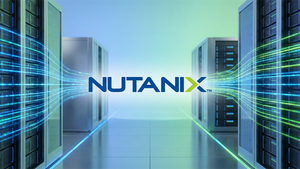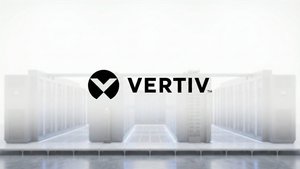Air Liquide, Chevron, Keppel Infrastructure, and PetroChina1 announced they have signed a memorandum of understanding to form a consortium which will aim to evaluate and advance the development of large-scale carbon capture, utilization, and sequestration (CCUS) solutions and integrated infrastructure in Singapore.
The consortium intends to research, test, and develop technological, logistical, and operational solutions for CCUS in Singapore. In doing so, the consortium will look to provide industry-wide CCUS integrated infrastructure, primarily to support the energy and chemicals sector, by capturing and aggregating carbon dioxide (CO2) from large industrial emitters at a centralized collection facility.
The CO2 could then be utilized to make useful products, such as plastics, fuels, and cement, and/or transported through either pipelines or ships to suitable reservoirs in the Asia Pacific region for sequestration via a process of injecting CO2 into deep underground geologic formations for permanent and secure storage.
Michele Gritti, vice president, Large Industries and Energy Transition, Air Liquide SEA Cluster, said: “Supporting the decarbonization of industry to help address the urgency of climate change is a priority. We are pleased to collaborate with Keppel Infrastructure, Chevron, and PetroChina in this decarbonization endeavor, leveraging our expertise and experience in carbon capture, purification, and liquefaction to build a comprehensive carbon capture decarbonization solution. In line with its Climate Objectives, Air Liquide is committed to support Singapore’s drive to achieve net-zero by 2050.”
Chris Powers, vice president, CCUS, Chevron New Energies, said: “Chevron believes the future of energy is lower carbon, and we are committed to advancing technologies and forming strategic relationships to make it happen. We look forward to working with like-minded collaborators to progress and advance the development of large-scale CCUS solutions in the Asia Pacific region for decades to come.”
Chua Yong Hwee, executive director (New Energy), Keppel Infrastructure, said: “Hard-to-abate sectors need to leverage technology and innovation to transit towards net zero CO2 emissions. Keppel Infrastructure is well-positioned to support efforts to decarbonize key sectors, given our experience as a leading developer, technology solutions provider and operator of energy and environmental infrastructure in Singapore and the region. In line with Keppel’s Vision, 2030, which places sustainability at the core of its strategy, our collaboration with Air Liquide, Chevron and PetroChina will enable us to take another step towards addressing Singapore’s needs for a low carbon economy.”
Li Shaolin, managing director of PetroChina International (Singapore), said: “There are various pathways to decarbonization, and CCUS has been identified as a strategic pathway to be thoroughly evaluated and developed. PetroChina is pleased to be part of this consortium with Air Liquide, Keppel Infrastructure and Chevron; a partnership that will leverage one another’s strengths, capabilities and respective ecosystems towards the advancement of large-scale CCUS solutions in Singapore. Participating in this initiative is our commitment to ensure harmony between the development of the energy industry and the environment, as we endeavor to make meaningful contributions towards Singapore’s goal of achieving Net Zero.”
______________________
1 Through Air Liquide Singapore Pte Ltd, Chevron New Venture Pte Ltd, Keppel Energy Ventures Pte Ltd, and PetroChina International (Singapore) Pte Ltd respectively.
About Air Liquide Singapore
Air Liquide Singapore (ALSg), a fully-owned subsidiary of Air Liquide Group, started its operations in 1911 and now employs close to 800 employees. With assets of more than S$1 billion, ALSg operates the largest network of air separation plants and gas production facilities, strategically located on 21 sites in Singapore. ALSg has come a long way since, partnering with diverse industry players to support the Singapore economy through a unique blend of advanced equipment, processes & systems, supported by a highly engaged and competent workforce.
For more information, please visit https://sg.airliquide.com/
About Keppel Infrastructure Holdings Pte Ltd
Keppel Infrastructure (KI) is a wholly-owned subsidiary of Keppel Corporation, a Singapore flagship multinational company providing solutions for sustainable urbanisation. KI provides solutions for some of the world’s most pressing challenges through its power & gas, environment and new energy businesses by leveraging its proprietary technology, strong technical expertise and proven operating capabilities.
KI has a track record of developing energy and environmental infrastructure end-to-end, including power generation assets, waste-to-energy (WTE) facilities, large-scale district cooling systems, as well as NEWater and desalination plants. In Singapore, it operates a 1,300-megawatt high efficiency gas-fired combined cycle power plant and a utility pipe rack and pipe line network in Jurong Island. It is also Singapore’s leading electricity retailer, and the first and largest district cooling systems developer and service provider. Globally, through Keppel Seghers, it is one of the leading WTE technology providers with more than 100 project references in 20 countries.
KI is expanding its presence, in Singapore and overseas, in areas such as power generation, waste management, district cooling, renewables and energy storage, electric vehicle charging infrastructure and other clean energy opportunities.
For more information, please visit www.kepinfra.com
About Chevron
Chevron (NYSE: CVX) is one of the world’s leading integrated energy companies. We believe affordable, reliable, and ever-cleaner energy is essential to achieving a more prosperous and sustainable world. Chevron produces crude oil and natural gas; manufactures transportation fuels, lubricants, petrochemicals and additives; and develops technologies that enhance our business and the industry. We are focused on lowering the carbon intensity in our operations and growing lower carbon businesses along with our traditional business lines.
For more information, please visit www.chevron.com
About PetroChina
PetroChina is one of the major oil and gas producers and distributors in China, and also a significant player in the global oil and gas industry. We engage in a wide range of activities related to oil, natural gas and new energies and materials, with a strategic focus on innovation, sustainable resources, market alignment, internationalization, and green and low-carbon development. While our focus remains on our core business, and advancing our business strategies of reform and innovation, quality and profitability as well as corporate governance, we believe in maintaining a strong stewardship role towards the environment. As part of our commitment to the UN Sustainable Development Goals 2030, we will actively seize opportunities for low-carbon transformation, and accelerate the process of building up new capacities for green development. This will enable us to create, and share a cleaner, greener and brighter future with all our stakeholders.
For more information, please visit www.petrochina.com.cn/ptr/
CAUTIONARY STATEMENTS RELEVANT TO FORWARD-LOOKING INFORMATION FOR THE PURPOSE OF “SAFE HARBOR” PROVISIONS OF THE PRIVATE SECURITIES LITIGATION REFORM ACT OF 1995
This news release contains forward-looking statements relating to Chevron’s operations and energy transition plans that are based on management's current expectations, estimates and projections about the petroleum, chemicals and other energy-related industries. Words or phrases such as “anticipates,” “expects,” “intends,” “plans,” “targets,” “advances,” “commits,” “drives,” “aims,” “forecasts,” “projects,” “believes,” “approaches,” “seeks,” “schedules,” “estimates,” “positions,” “pursues,” “may,” “can,” “could,” “should,” “will,” “budgets,” “outlook,” “trends,” “guidance,” “focus,” “on track,” “goals,” “objectives,” “strategies,” “opportunities,” “poised,” “potential,” “ambitions,” “aspires” and similar expressions are intended to identify such forward-looking statements. These statements are not guarantees of future performance and are subject to certain risks, uncertainties and other factors, many of which are beyond the company’s control and are difficult to predict. Therefore, actual outcomes and results may differ materially from what is expressed or forecasted in such forward-looking statements. The reader should not place undue reliance on these forward-looking statements, which speak only as of the date of this news release. Unless legally required, Chevron undertakes no obligation to update publicly any forward-looking statements, whether as a result of new information, future events or otherwise.
Among the important factors that could cause actual results to differ materially from those in the forward-looking statements are: changing crude oil and natural gas prices and demand for the company’s products, and production curtailments due to market conditions; crude oil production quotas or other actions that might be imposed by the Organization of Petroleum Exporting Countries and other producing countries; technological advancements; changes to government policies in the countries in which the company operates; public health crises, such as pandemics (including coronavirus (COVID-19)) and epidemics, and any related government policies and actions; disruptions in the company’s global supply chain, including supply chain constraints and escalation of the cost of goods and services; changing economic, regulatory and political environments in the various countries in which the company operates; general domestic and international economic and political conditions, including the military conflict between Russia and Ukraine and the global response to such conflict; changing refining, marketing and chemicals margins; actions of competitors or regulators; timing of exploration expenses; timing of crude oil liftings; the competitiveness of alternate-energy sources or product substitutes; development of large carbon capture and offset markets; the results of operations and financial condition of the company’s suppliers, vendors, partners and equity affiliates, particularly during the COVID-19 pandemic; the inability or failure of the company’s joint-venture partners to fund their share of operations and development activities; the potential failure to achieve expected net production from existing and future crude oil and natural gas development projects; potential delays in the development, construction or start-up of planned projects; the potential disruption or interruption of the company’s operations due to war, accidents, political events, civil unrest, severe weather, cyber threats, terrorist acts, or other natural or human causes beyond the company’s control; the potential liability for remedial actions or assessments under existing or future environmental regulations and litigation; significant operational, investment or product changes undertaken or required by existing or future environmental statutes and regulations, including international agreements and national or regional legislation and regulatory measures to limit or reduce greenhouse gas emissions; the potential liability resulting from pending or future litigation; the company’s future acquisitions or dispositions of assets or shares or the delay or failure of such transactions to close based on required closing conditions; the potential for gains and losses from asset dispositions or impairments; government mandated sales, divestitures, recapitalizations, taxes and tax audits, tariffs, sanctions, changes in fiscal terms or restrictions on scope of company operations; foreign currency movements compared with the U.S. dollar; material reductions in corporate liquidity and access to debt markets; the receipt of required Board authorizations to implement capital allocation strategies, including future stock repurchase programs and dividend payments; the effects of changed accounting rules under generally accepted accounting principles promulgated by rule-setting bodies; the company’s ability to identify and mitigate the risks and hazards inherent in operating in the global energy industry; and the factors set forth under the heading “Risk Factors” on pages 20 through 25 of the company’s 2021 Annual Report on Form 10-K and in subsequent filings with the U.S. Securities and Exchange Commission. Other unpredictable or unknown factors not discussed in this news release could also have material adverse effects on forward-looking statements.
View source version on businesswire.com: https://www.businesswire.com/news/home/20220921005223/en/
Contacts
Air Liquide
Ivan Cheong
Email : Ivan.cheong@airliquide.com
Chevron
Creighton Welch
Email : CreightonWelch@chevron.com
Keppel
Ang Lai Lee
Email : Lailee.ang@kepcorp.com
PetroChina
Nadia Tay
Email : Nadia-tay@petrochina.com.sg


















